I met Tom when we judged North American Effies last year in New York. He’d just gotten off a plane from China. He spoke on a panel at lunch, and I was taken by his open, clear position on managing and growing brands. A few months later, I read that because of his family he was choosing not to follow The North Face when they moved their headquarters from San Francisco to Denver. I knew then I wanted to interview him. I talked with him at the beginning of the quarantine after he created a public post on LinkedIn offering help to anyone who needed to brainstorm or talk through issues during this unprecedented time. Turns out, he was the perfect person to ask for counsel on how brands can navigate this unchartered territory.
A shortened version of this interview first ran in Fast Company on May 2nd, 2020
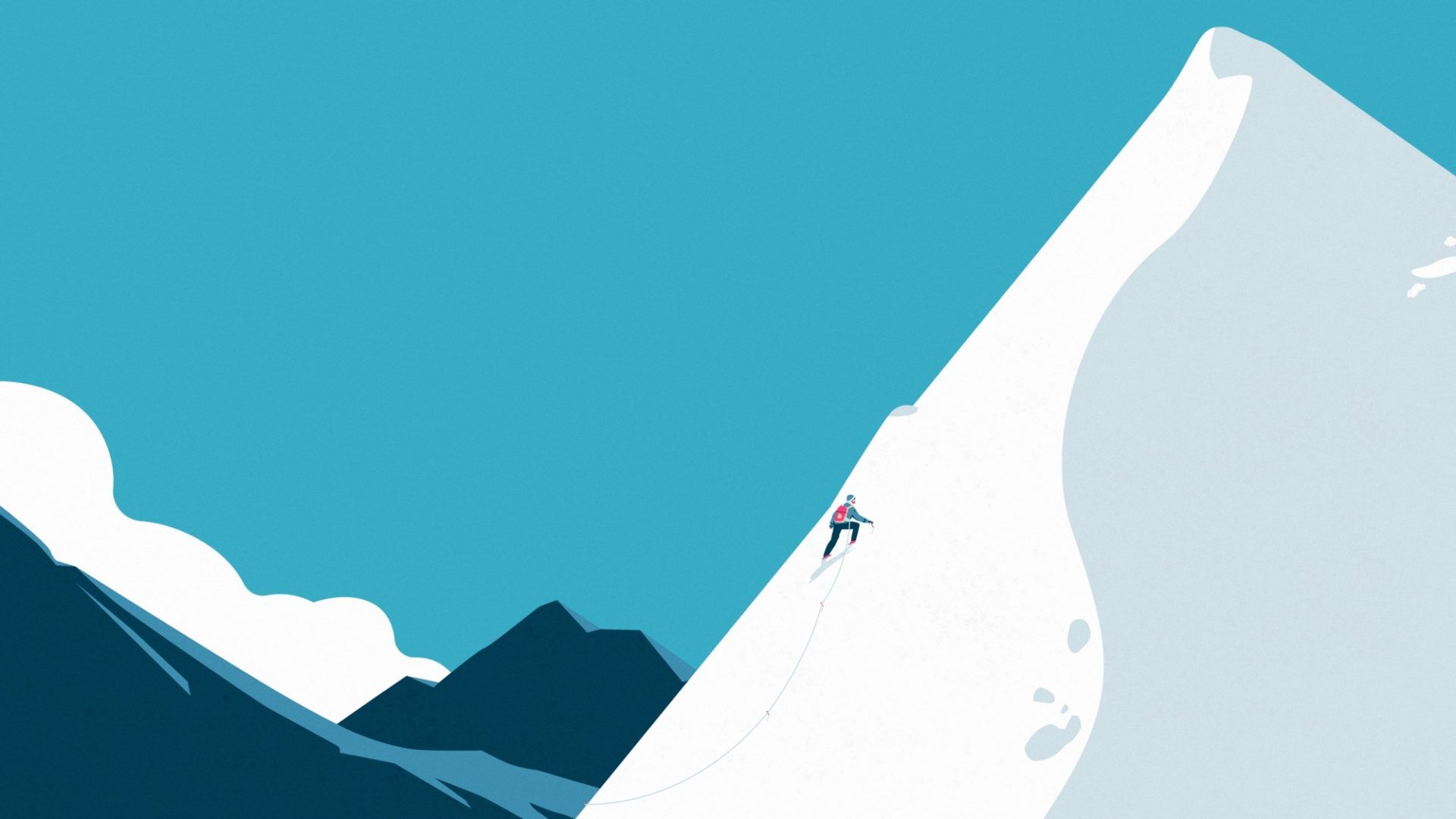
In the Northern Hemisphere, the north face of a mountain is generally the coldest, iciest and most formidable route to climb.

In 2018, Tom was named one of Forbes’ most influential chief marketing officers. He was honored for his work on global campaigns focused on diversity & inclusion.
Obviously, the world has changed, and we don’t know the impact COVID-19 will have on business and brands yet. It feels appropriate to take a step back and ask: What is the role of a brand right now?
The most important thing is to be honest and transparent about how you can help. Companies who have the ability to truly help should do so. I’ve seen companies step up — whether it’s a distilling company making hand sanitizer, an apparel company making face masks or scrubs, or a food company offering school lunches to children in need.
And then there are plenty of other companies with different capabilities that can’t offer those kinds of services. They need to shift quickly to understand how they can create useful, entertaining content and conversations that will help people cope. So many people are stuck in confined spaces and looking for ways to manage their time, stay active, and balance work and kids. The more brands can help people stay connected to communities, passions, learning, like-minded people, thoughts and ideas, the more they’re going to win.
The good news is a lot of brands and marketers have spent the past couple years thinking about things through the lens of brand purpose, which as you know has been a buzzword. But now is really the time to put it into action. And hopefully a lot of businesses are well-positioned to do that.
Brands have definitely been identifying their purpose to set themselves apart. Sometimes it can appear overtly self-serving. Is there a framework they should be using to find a purpose that rings true with the consumer?
At the end of the day, when I think about purpose, it lies at that intersection between what you do best as a company and what need you can serve in the world. So, what does the world need? If you can find where those two things overlap, that is where brands can express their purpose best. Now it’s important to add: Not every brand’s purpose needs to save the world. It’s okay for a brand’s purpose just to be the best at what they do.
I was once on a panel talking about brand purpose with someone from a financial services brand. He had a moment where he said: “‘Look, our purpose is to help people do their taxes. We’re not trying to make the world a more inclusive, beautiful place. We just want people to be able to do their taxes.”’ And that’s okay. Not every brand needs to — , or even should — , strive to have a culture-changing purpose if their business isn’t set up for it.
How can brands get credit for what they’re doing during this time without looking opportunistic?
I’m hoping companies don’t decide to help just because they sat around a board room and said, “How do we deploy our purpose in this time?” The right way is to ask yourself: “What problems need to be solved, and how do we think we can help?” Make sure it’s something that’s core to your capability and that you’re doing it for the right reasons, not because you want credit.
I’ve had a couple of conversations over the past week with people who run big brands and have given a lot of money to help on the front lines of fighting coronavirus. They’re supporting ER rooms and doctors and nurses. The conversation was: “Hey, we did this., Should we talk about it? How should I talk about it? Should we attach it to the brand or not?” My response to them was, “Why did you do it?” They said, “We did it because we think it’s the right thing to do, and because we can.” My point of view is that’s enough. I don’t think that you need to claim credit for it. I believe in some karmic retribution., If you do the right thing, it will come back around, and people will come to your support when you need it. If you’re doing it for the right reasons, those questions sort of answer themselves.
I’ve been pleased and thrilled to see how many brands have stepped up, not because it’s a marketing moment, but because it’s a humanity moment. It’s the right thing to do.
What key concerns are you hearing about from executives right now?
The conversations I’ve had have been with leaders of publicly held companies and smaller, independently held companies. The theme everyone is most concerned about is how to treat their people. It doesn’t matter who owns your company, laying off people sucks. Especially at a time when you know there aren’t a lot of other resources or options out there. It’s heartbreaking to have to make these decisions, but it’s either you make these decisions now or the company doesn’t exist in a few months, and then everyone is in pain.
How can small businesses get through this?
I wish I knew the answer to that. And by the way, it’s not only small businesses who are close to the edge. In the last five to seven years, we’ve seen more mid-sized businesses that are 75 to 100 million-dollar companies operating at a loss. They’ve had to be supported with capital infusions to keep the lights on. They can only burn money for so long. So, it’s a really unfortunate set of events that has come together.
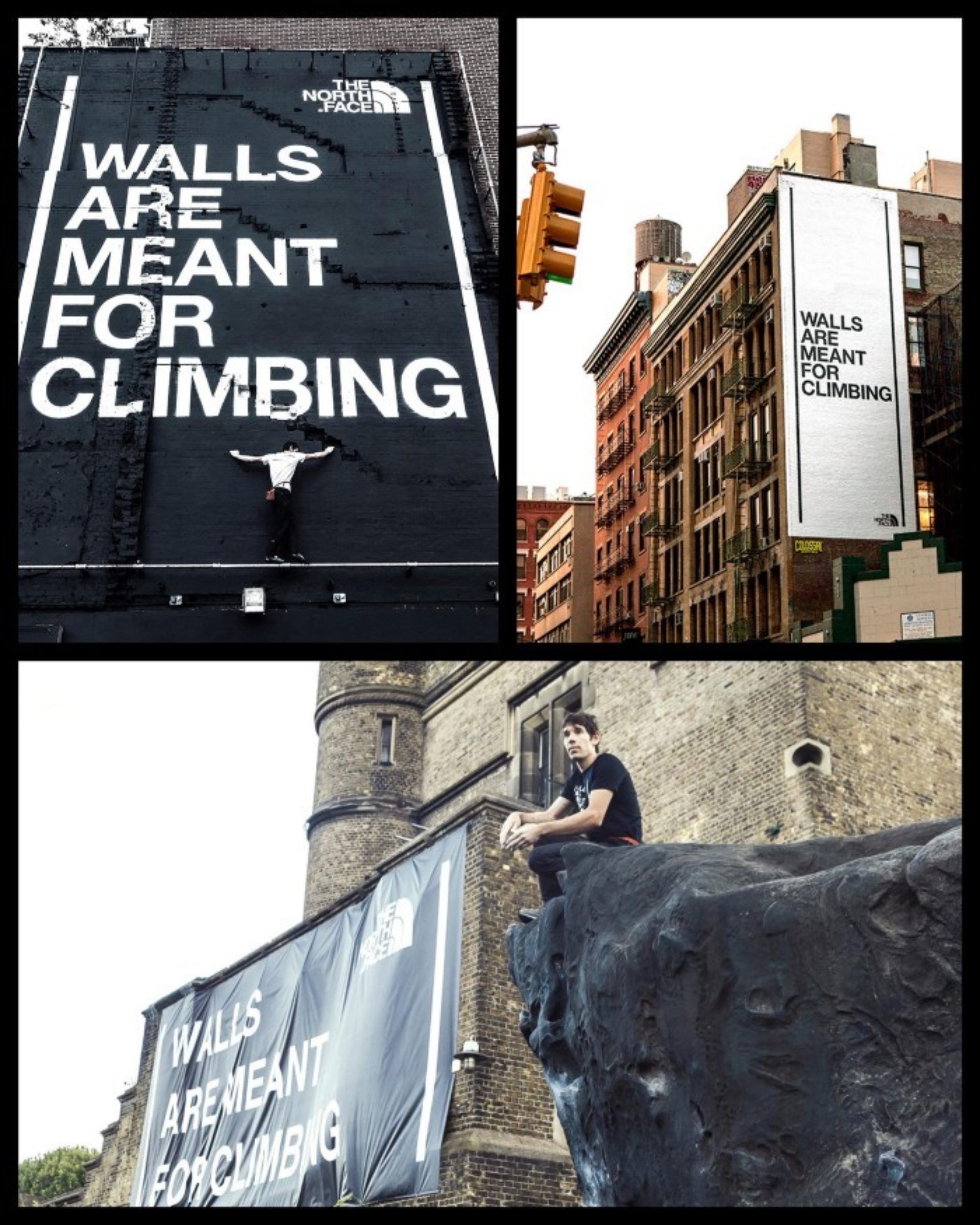
“We developed this campaign in 2017 to grow and diversify the sport of climbing and urge people to think more about the community and what we can build by working together. We also collaborated with the Trust for Public Land to help build climbing boulders in underserved communities in the U.S.”
Your management style is to give people radical autonomy and accountability. How would you advise them to do that in a virtual setting?
That’s a great question, Carolyn. I’m in a unique position because I’ve always worked for companies at the physical office. I’m a walk-around type of manager. I like to be present and see people. I’ve been working from home for the last six months as a consultant, and I’ve really missed human interaction. To some degree, many of the principles remain the same. You can’t expect people to come to you. You have to reach out and check in with people. And you have to do it in a way that’s not always related to the work at hand, but just to see how people are doing, what they need help with, and how they’re managing through it.
Like everybody else, I’ve become a master of video conference in the last few months. There is power in seeing another person. It holds you more accountable when you can see each other rather than just a voice on the phone. People talk about bringing your whole self to work. Now, you’re bringing work to your whole self. Everyone gets to see what your bedroom looks like or what painting you have on your living room wall or what a mess your kitchen is.
If you have a team of more than 15 or 20 people, you have to think of ways to get them all together and connect in a human way. You have to manage your time, knowing that a huge part of it has to be about keeping those relationships. Managers who make it through this will be better managers because they’ll take the learnings from this time.
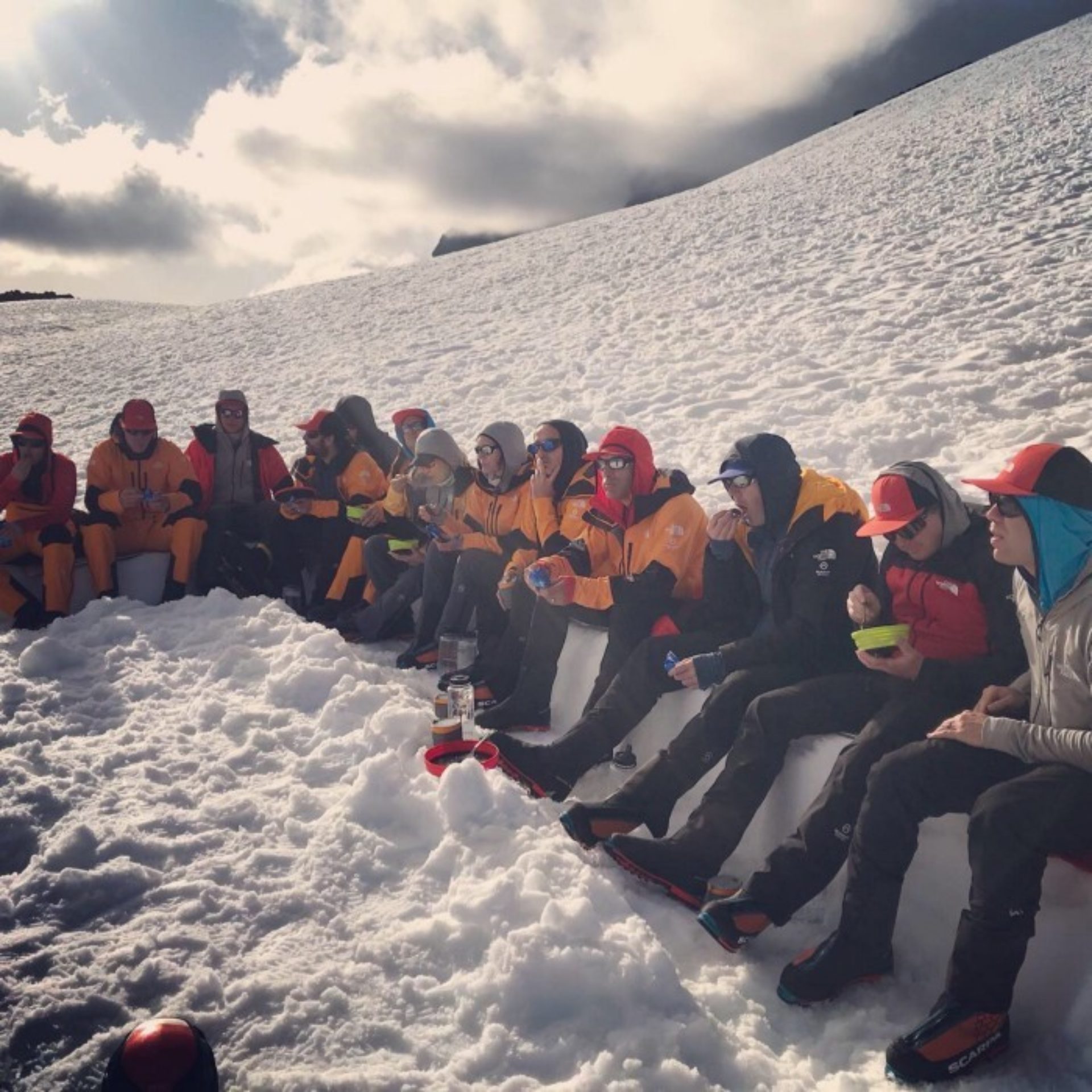
Tom on a team outing in 2018?, Mount Baker in Washington
What positive effect can this event have on leaders managing brands?When you’re managing a brand and a business, there are always…, let’s just call them disasters. — A big customer decides to change course in the middle of an initiative, or a key competitor launches an idea you were just about to launch. What’s happening now is a disaster on a much, much larger scale. For the leaders who get through this experience, it will only benefit them in the future. As a team, they’ve been through something bigger before, and it puts things in perspective in a way that will be helpful. At this point, everyone is going through the Super Bowl of disasters. When the next one comes, it’s going to feel like maybe the divisional playoffs or just a regular season game.
Given all of the unknowns ahead of us, how would you advise brands to continue to take risks?
It just depends on how you define risk. When you look at brands that are really reacting to this crisis and putting their core capabilities to work, they’re doing things some people might see as risky, but I think the bigger risk is not doing anything.
The North Face ethos is about exploring the unknown. What mindset can we take from athletes that we can apply to this situation?
Wow, that’s a really good question. I would say that the thing we’re in most danger of losing right now in terms of the explorer’s mindset is curiosity. What drives athletes and keeps them going through the hardships, quite frankly, is a sense of curiosity — , wondering: What is it going to take to get through this? What is over that ridge?
We need to adopt that mindset and ask: What’s the world going to look like? How can I continue to learn and grow as an individual and take something from this experience that is going to make me better on the other side of it? If you talked to any of The North Face athletes, they would encourage people to use this time to explore that curiosity. Not often do you have this much time, so ask how can you use it to enrich yourself?
I realize, also, that I’m lucky to be able to say that. For many, many people out there, this time isn’t just free time where they can read a book. They’re figuring out how to feed their children and where their next paycheck is going to come from.
What are the most significant changes brands will have to adapt to in this new world?
There is a ton to unpack here, but one of the most significant changes has to be consumers’’ almost total transition to online shopping and delivery as the primary form of commerce. We were clearly moving quickly in this direction, but the pandemic has sealed the deal. We saw a similar dynamic in China after SARS.
When do you think it will be okay for brands to stop addressing the pandemic in their messaging?
My sense is that as long as the pandemic is active and present, brands should be addressing it in some way. That is not to say that all of their messaging has to be *about* the pandemic, but it should take the current state of affairs into consideration and be appropriate.
For instance, one of my clients, Urban Remedy — an amazing, organic, ultra-fresh, ultra-clean food company — , recently launched a campaign based on the concept of love. It doesn’t specifically mention COVID-19, but it clearly points to the need for love of oneself, the planet and the body, a message that remains uber-relevant within the context of the pandemic.
What’s one thing will you do differently in managing brands moving forward?
I am not sure I have the answer to this question, but certainly we will have to rethink what in-person brand experiences look like moving forward. How do brands establish an identity — (and, for some businesses), a physical presence — when consumers might not be congregating?
Early on, people responded intensely in terms of their shopping habits and hoarding. Do you think there was anything about our culture that prompted people to ratchet up their response that quickly?
Gosh, that’s a good question. The toilet paper thing, I don’t understand at all. I don’t even think the people that were buying it understood it. Why toilet paper? I have no idea. If anything, it goes back to a question of trusted sources. Everyone gets their information from a different place today. The truth that they hear from that place is the truth in their mind. When some of those truths rub up against each other, it causes some friction and panic.
No one still really knows the real information on how many cases are out there, how many cases in your own neighborhood and what the trajectory is. The overloaded mix of information makes it impossible to have a unified point of view.
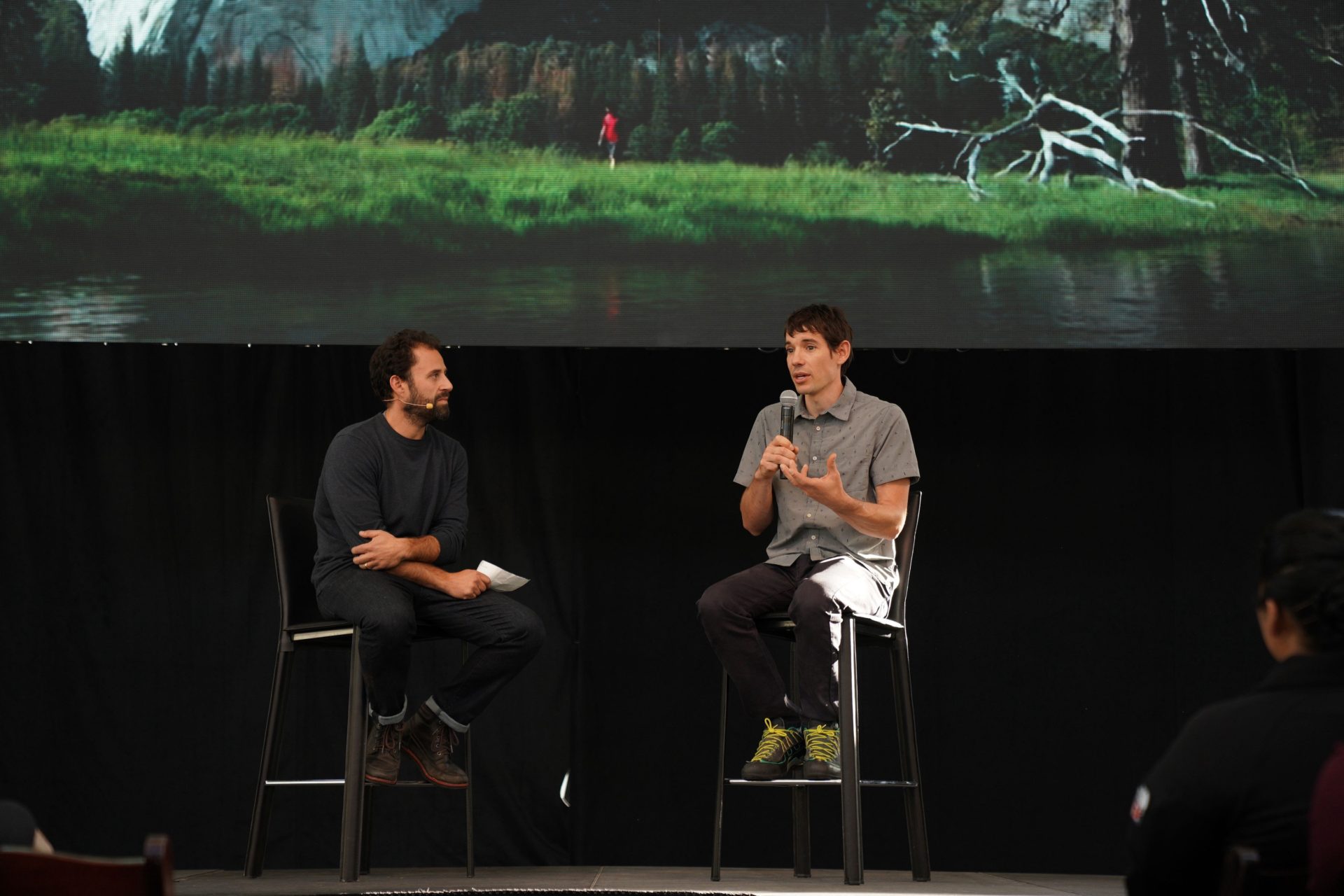
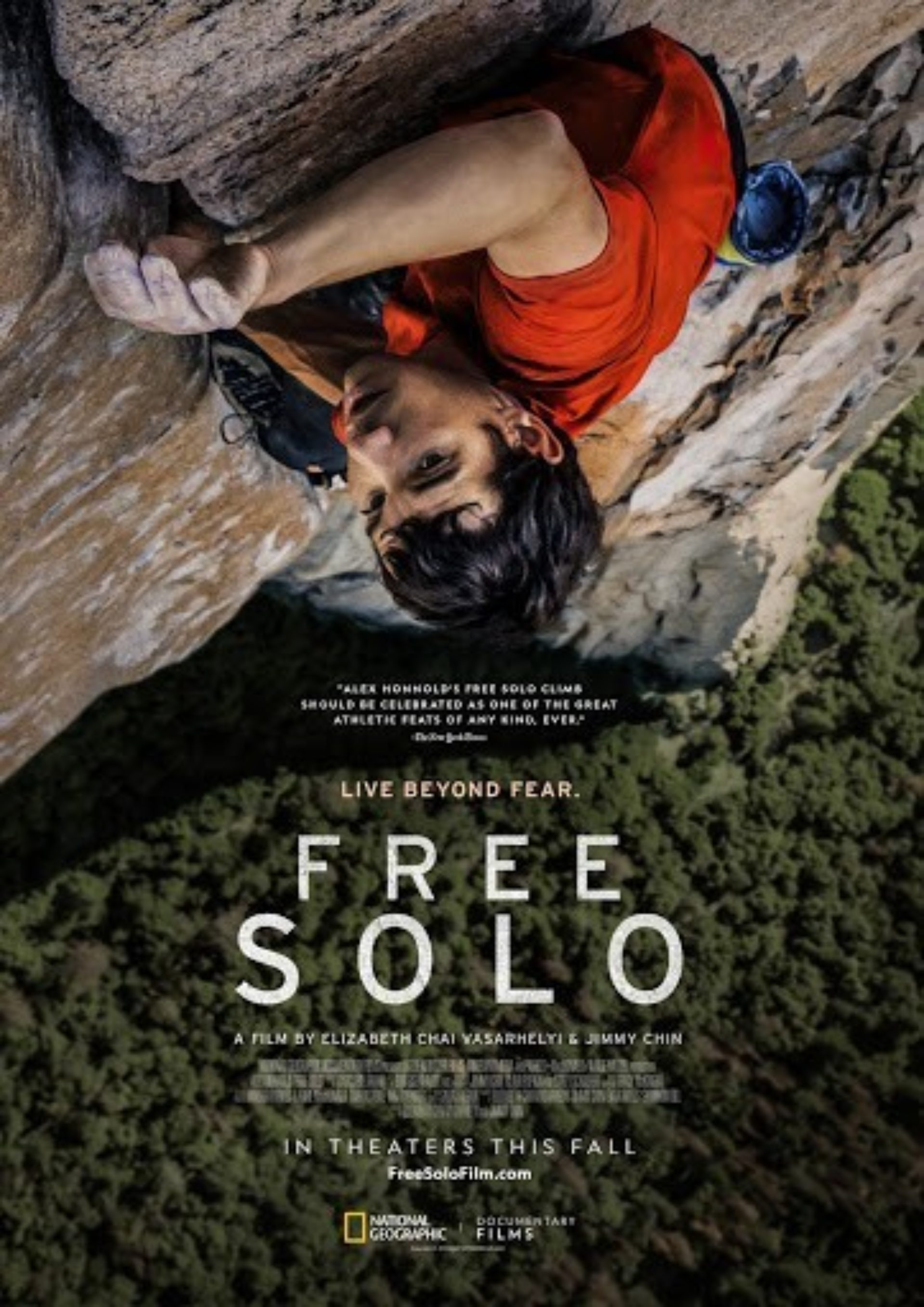
“Free Solo was a once-in-a-lifetime moment for the brand. It brought attention to the sport of climbing, to our athletes and to the brand in a way that a traditional ad never could. I give massive credit to Alex Honnold, Jimmy Chin and Chai Vaserhelyi for what they created. Also, a huge credit goes to The North Face marketing teams of the past who had the vision to build an athlete team and sign Alex and Jimmy. I was lucky to inherit that team at the right time.”
Shifting gears, Let’s talk about your experience in managing brands. Can you share a story about an early career event that was defining for you?
One day when I was working in the spirits industry, I came home from work to find my 8-year-old daughter. She had drawn a picture of me at work, which was a very sweet thing to do. It was of a stick figure holding a glass. At the top, she had written, “”Captain Morgan! It’s the best!””. It was at that point that I realized that I wanted to do more meaningful work.
Was there someone who was significant in your development?
So many people influenced me, and oftentimes, they might not have even known it. I was a bit of a punk when I was younger. I always wanted to be the smartest person in the room. Throughout my career, I got called out on it by my managers and colleagues. This reminded me that people weren’t really buying the image I projected of myself. They could see through it. It taught me that being imperfect and vulnerable was much more honest and useful.
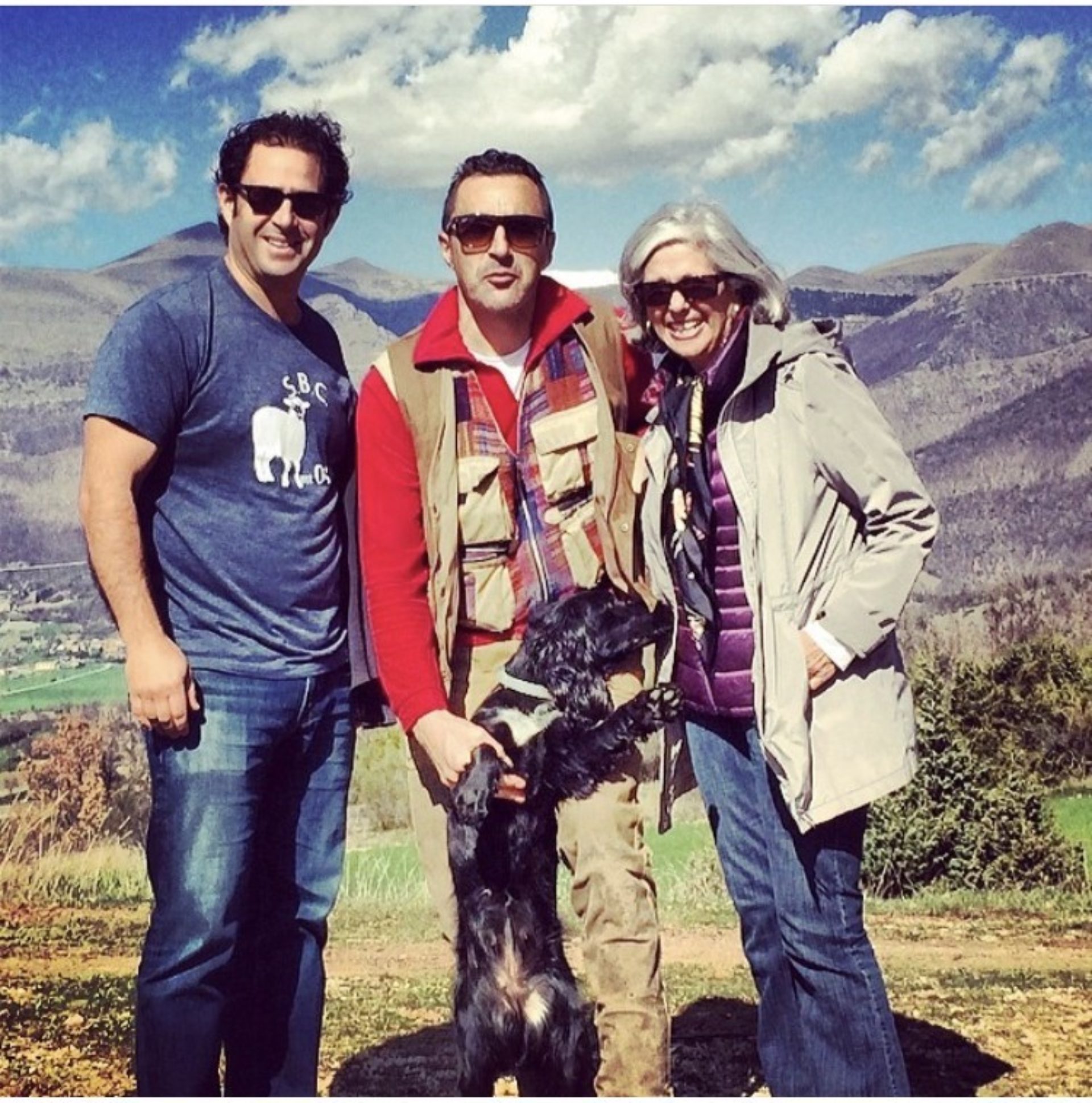
Tom and his mom in Italy with a truffle-hunting guide and dog.
What role did your mom play in shaping who you are today?
My mom is rad. She raised three boys, all a year apart. She was an editor for Playboy magazine in the 60’s. She started her own culinary travel business at age 50 and grew it to be incredibly successful. She also loves a good drink and a good joke. She and my dad taught me how to be a great parent.
One question I like to ask all the people I interview is: How would you define beautiful thinking?
I would define beautiful thinking as human-led thinking. And what do I mean by that? In the context of marketing, we need to remember at the end of the day that the consumer that you have written a description of on a page is actually a person. The brand that you work for, the business that you work for, is nothing if not just a collection of people. Ultimately, that our businesses can make the world a better place. The most beautiful thinking comes from brands that recognize our humanity, our vulnerabilities, our desires, and our foibles. They, create conversations, actions and products that help make us better.
What’s the first thing you will do after the quarantine is lifted?
The first thing I’ll do, (as soon as it’ is allowed,) is go get dinner and see some live music with my wife.


